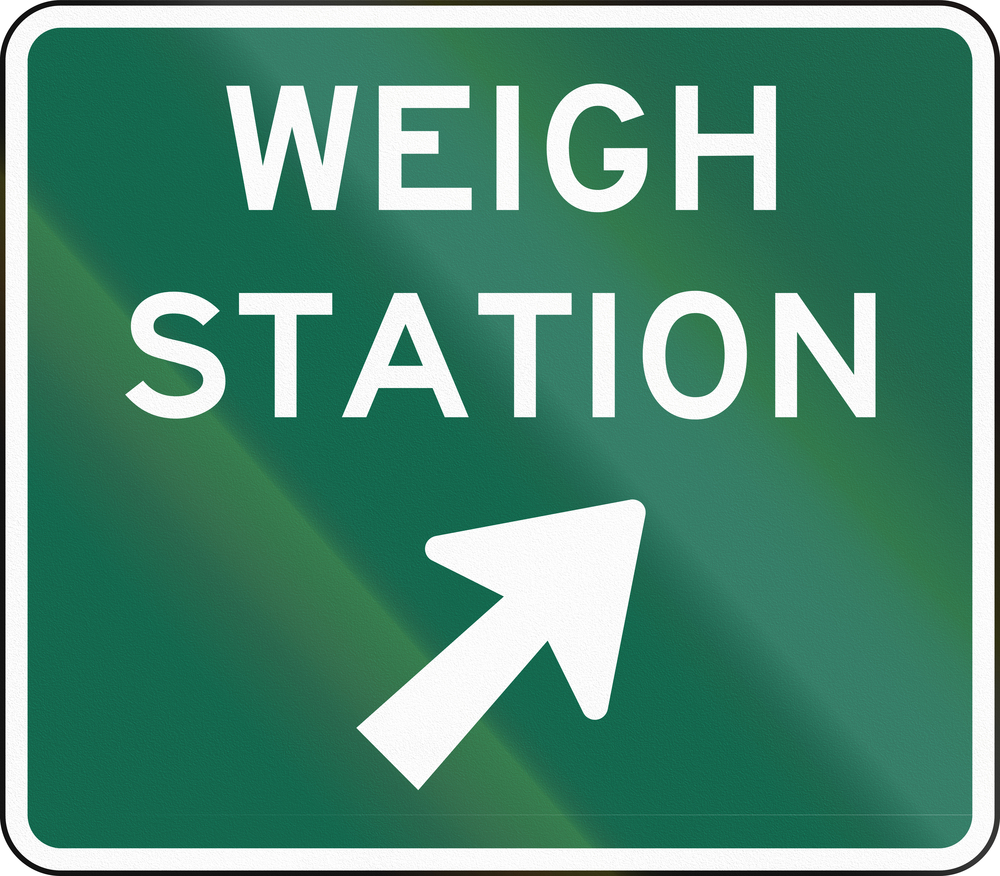You just got your CDL license, and it’s time to hit the road with your first load. As you cruise down the interstate, you notice a weigh station in the distance, but you don’t remember what you learned in trucking school. Don’t worry, we’ve got you’ve covered. Read through this blog for a refresher of what weigh stations are and what you’re supposed to do when stopped.
What are Weigh Stations?
A weigh station is defined as “a roadside station where commercial vehicles are required to stop and be inspected.” The Department of Transportation (DOT) conducts these stops to ensure all loads are safe and not overweight. When stopped, the DOT will check for two things: the total weight of the truck and a safety inspection. The weight will be determined on a large scale, and the inspection will be done visually. Some inspections can be fairly basic, whereas others are very comprehensive.
Why are Trucks Weighed?
The primary reason to weigh trucks is for safety. The DOT will make sure that all trucks are the proper weight and are in good working order. Drivers may need to avoid roads, bridges, or overpasses that have weight limits if too heavy. Additionally, safety inspections are carried out to ensure the safety of all people on the road. If loads are too big, they may be hard to stop and maintain control of, which is a safety concern when sharing the road.
Who Needs to Stop at Weigh Stations?
Every state has different requirements on who needs to stop at weigh stations. If you’re traveling across state lines, you’ll need to do your research beforehand. According to the Nebraska Truck Information Guide (Section 2), vehicles that must exit to a weigh station are:
- Trucks, truck-trailers, buses
- Pickups pulling trailers
- Pickup trucks with a factory load rating over 1 ton
- Vehicles operating under an over-dimensional and/or overweight permit
Exceptions:
- Recreational vehicles
- Pickup trucks with a factory load rating of 1 ton or less
The purpose of weighing heavier vehicles is because they do more damage than normal automobiles. Some states tax these vehicles to help pay for damaged roads and construction. Additionally, some states restrict vehicles over a certain weight to drive on certain roads or in the state altogether.
What To Do at Weigh Stations?
As you drive down the interstate, you’ll notice signs warning you that weigh stations are up ahead. Pay attention to the signs that indicate whether the station is open or closed. If open, you’ll want to slow down, get in the right lane, and join the line for the scale. In some cases, PrePass services will be offered to drivers who hold that membership, which will speed up the process for them.
When pulling up to the scale, follow the direction as to “slow down” or “stop.” If passing the scale at the right speed and with a safe load, you’ll be able to hit the road again. Typically this process is handled rather quickly so that drivers can be on their way in a short amount of time. If not, you may be asked to pull over for further weighing and inspection.
For the inspection, your DOT number will be entered into a computer system, which will pull up your logbook and safety rating. As long as all of the information is accurate, you’ll be sent on your way. However, if there is missing or incorrect information, you can expect there to be a delay and more inspections. For this reason, it’s extremely important to keep your log and truck in good order all the time.
Closing Thoughts
Stopping at weigh stations is not an option for most truck drivers, but they can be prepared before starting your haul. When hitting the road, our drivers at Liquid Trucking are highly trained and have well-maintained trucks. If you’re interested in having Liquid Trucking haul for you, please fill out our Get a Quote form or call us at 844-GO-TANKS.
